Growing basil from seed is a simple, inexpensive way to keep fresh herbs at your fingertips. Basil is pretty commonly grown and you should have no problem finding seeds in the garden section of nearly any store or online in the springtime.

You can start your seeds indoors or out. If you are going to start your seeds outdoors, wait until the threat of frost has passed before you plant your seeds. If you are starting your seeds indoors, you can begin 4-6 week earlier.
To begin, start with a flat or container filled with potting soil. Be sure that your container has holes in the bottom to allow excess water to drain out. Sprinkle your seeds on top and cover with a light layer of soil. Don’t over think this. It’s simple, your top layer should be 1/8- 1/4 inch thick or just enough to cover the seeds and keep them in place after a light watering. Gently pat the soil down over the seeds and give your container a light watering.
If you are keeping your seeds inside, move them to a sunny spot by a window. If you are keeping them outside, select a sunny spot where spring rain will cut down on your watering. Plants in containers, especially shallow flats, dry out faster than plants in the ground. Make sure to check on your seeds and water them if the soil starts to feel dry.
I chose to start my seeds outside last spring even though we had a harsh winter and a late spring. Normally I would have planted the seeds in mid to late May, but it was mid-June and the temperatures just didn’t seem to want to get above 70 degrees. In an effort to speed up my seed growth, I made a makeshift greenhouse out of materials I had laying around. I stacked some 4 x 4 wood pieces to make a frame and laid a piece of plexiglass over the top.
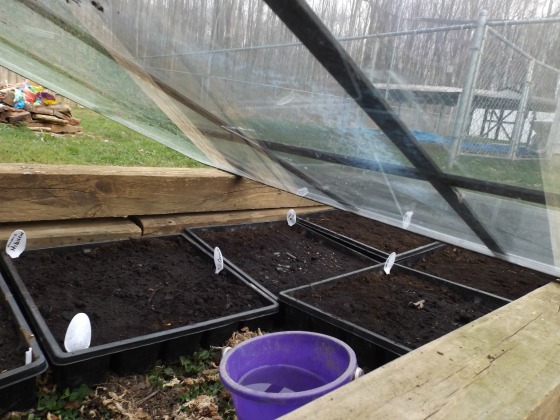
The purple bucket was with water to help keep the area under the glass humid. It didn’t help as much I as I expected it would; I still watered each flat daily and rarely saw condensation on the glass.
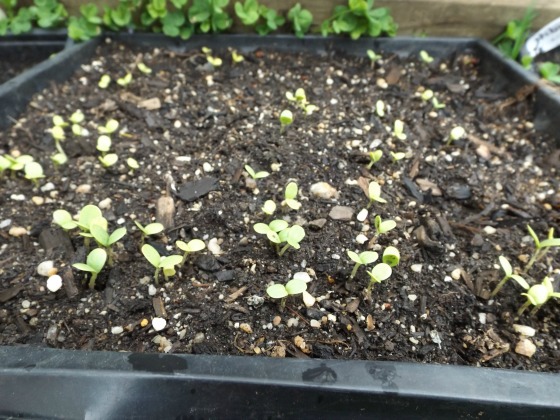
It took about two and a half weeks for the basil to begin sprouting.
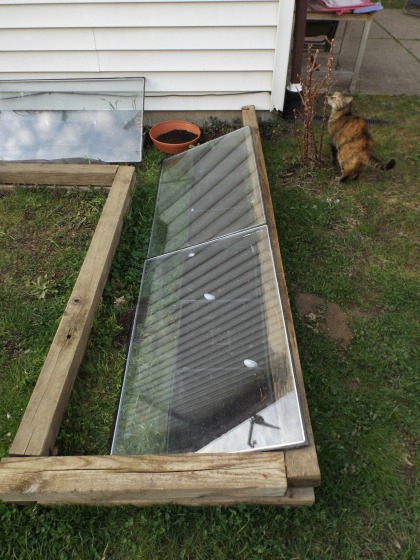
Once they sprouted, I angled the widows so they would catch the direct sunlight. This seemed to work a little better so I’m going to try this method for warming up seeds next spring. You certainly don’t have to build a greenhouse or find glass. Your seeds will sprout just fine from a sunny spot on your back patio.
After your seeds have sprouted and are 4-6 inches tall, you can gently remove them from the flat and transplant them into a larger pot or directly into your garden. Try to disturb the roots as little as possible when moving them. They should grow pretty effortlessly from this point on and there is no need to fertilize them. Just give them some water if the soil feels dry.
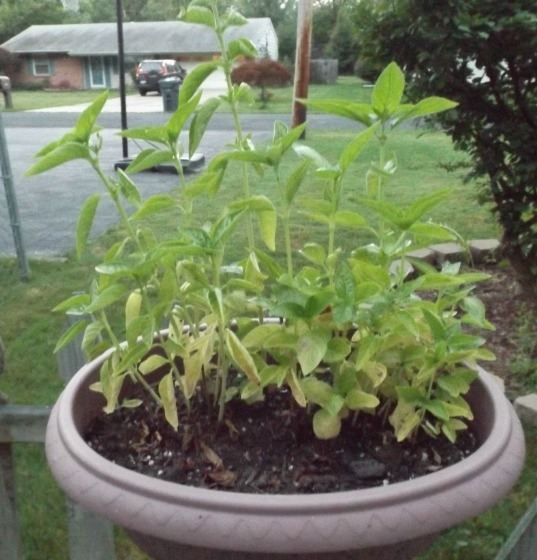
Once mid-summer hits, you might notice white or purple flowers growing from the top of your plant and if you do, snip them off. If you leave them on, your plant will focus its energy on producing more flowers and seeds and growth will slow drastically. Pinch off the flowers so your basil plant will use that energy to produce more of those tasty leaves instead.
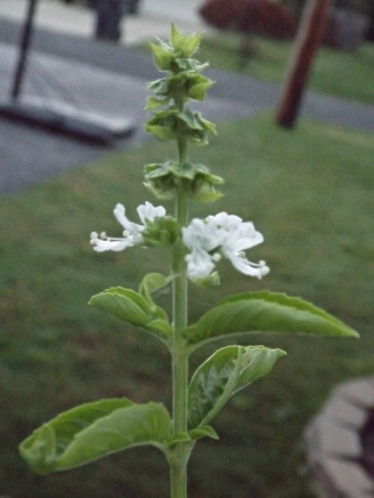
Mike McGroarty is the owner of McGroarty Enterprises and the author of several books. You can visit his website at Freeplants.com and read his blog at Mikesbackyardnursery.com.


Comment here